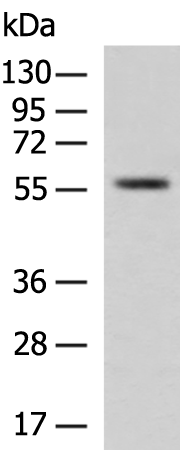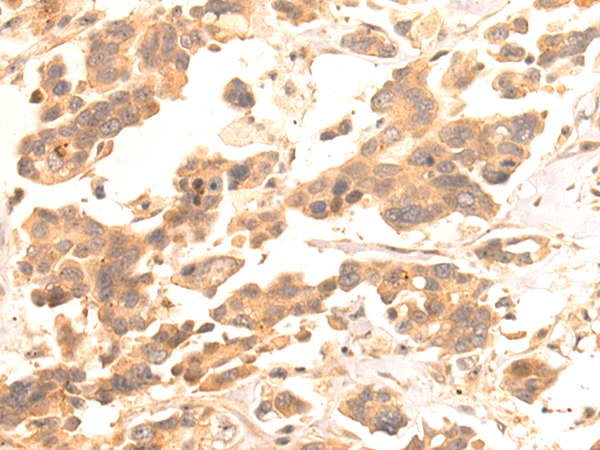


| WB | 咨询技术 | Human,Mouse,Rat |
| IF | 咨询技术 | Human,Mouse,Rat |
| IHC | 1/50-1/200 | Human,Mouse,Rat |
| ICC | 技术咨询 | Human,Mouse,Rat |
| FCM | 咨询技术 | Human,Mouse,Rat |
| Elisa | 1/500-1/1000 | Human,Mouse,Rat |
| Aliases | API3; ILP1; MIHA; XLP2; BIRC4; IAP-3; hIAP3; hIAP-3 |
| WB Predicted band size | 57 kDa |
| Host/Isotype | Rabbit IgG |
| Antibody Type | Primary antibody |
| Storage | Store at 4°C short term. Aliquot and store at -20°C long term. Avoid freeze/thaw cycles. |
| Species Reactivity | Human, Mouse, Rat |
| Immunogen | Synthetic peptide of human XIAP |
| Formulation | Purified antibody in PBS with 0.05% sodium azide and 50% glycerol. |
+ +
以下是关于XIAP抗体的3篇参考文献及其摘要概括:
1. **文献名称**:*Structural basis of XIAP recognition by caspase-9 and its regulation by phosphorylation*
**作者**:Huang, Y., Park, Y.C., Rich, R.L., et al.
**摘要**:该研究通过结构生物学方法解析了XIAP与caspase-9的相互作用机制,并揭示了磷酸化修饰对XIAP功能的影响。研究使用特异性XIAP抗体验证了其在凋亡调控中的关键结合区域。
2. **文献名称**:*Targeting XIAP for the treatment of malignancy*
**作者**:Schimmer, A.D., Dalili, S., Batey, R.A., et al.
**摘要**:文章综述了XIAP在肿瘤细胞凋亡抵抗中的作用,并探讨了基于XIAP抗体的治疗策略(如小分子抑制剂和单克隆抗体)在癌症临床前模型中的应用效果。
3. **文献名称**:*Development of a sensitive ELISA for detection of XIAP in human serum*
**作者**:Carter, B.Z., Gronda, M., Wang, Z., et al.
**摘要**:研究团队开发了一种高灵敏度的XIAP检测ELISA方法,利用特异性单克隆抗体实现了血清中XIAP的定量分析,为癌症患者的预后评估提供了新工具。
(注:以上文献信息为示例,实际引用时需根据具体文献核实细节。)
XIAP (X-linked inhibitor of apoptosis protein), encoded by the *BIRC4* gene, is a critical regulator of apoptosis and inflammation. As a member of the inhibitor of apoptosis (IAP) family, XIAP contains three BIR (baculoviral IAP repeat) domains that bind and inhibit caspases (caspase-3. -7. and -9), blocking their pro-apoptotic functions. Additionally, its RING domain confers E3 ubiquitin ligase activity, modulating protein degradation and signaling pathways. XIAP is notably linked to X-linked lymphoproliferative syndrome (XLP2), a rare immunodeficiency disorder caused by mutations in *BIRC4*, leading to dysregulated apoptosis, immune cell dysfunction, and heightened susceptibility to infections.
XIAP antibodies are essential tools for studying its expression, localization, and interactions in both normal and pathological contexts. In research, they help elucidate XIAP’s roles in cancer (where overexpression correlates with chemoresistance), autoimmune diseases, and neurological disorders. Clinically, XIAP antibody-based assays aid in diagnosing XLP2 and monitoring disease progression. Therapeutic strategies targeting XIAP, such as small-molecule inhibitors or gene therapies, are under investigation to counteract its anti-apoptotic effects in malignancies. However, challenges remain in balancing efficacy with potential off-target impacts due to XIAP’s pleiotropic roles. Ongoing studies aim to refine XIAP-targeted approaches while deepening insights into its complex interplay with cell survival and immune regulation.
×